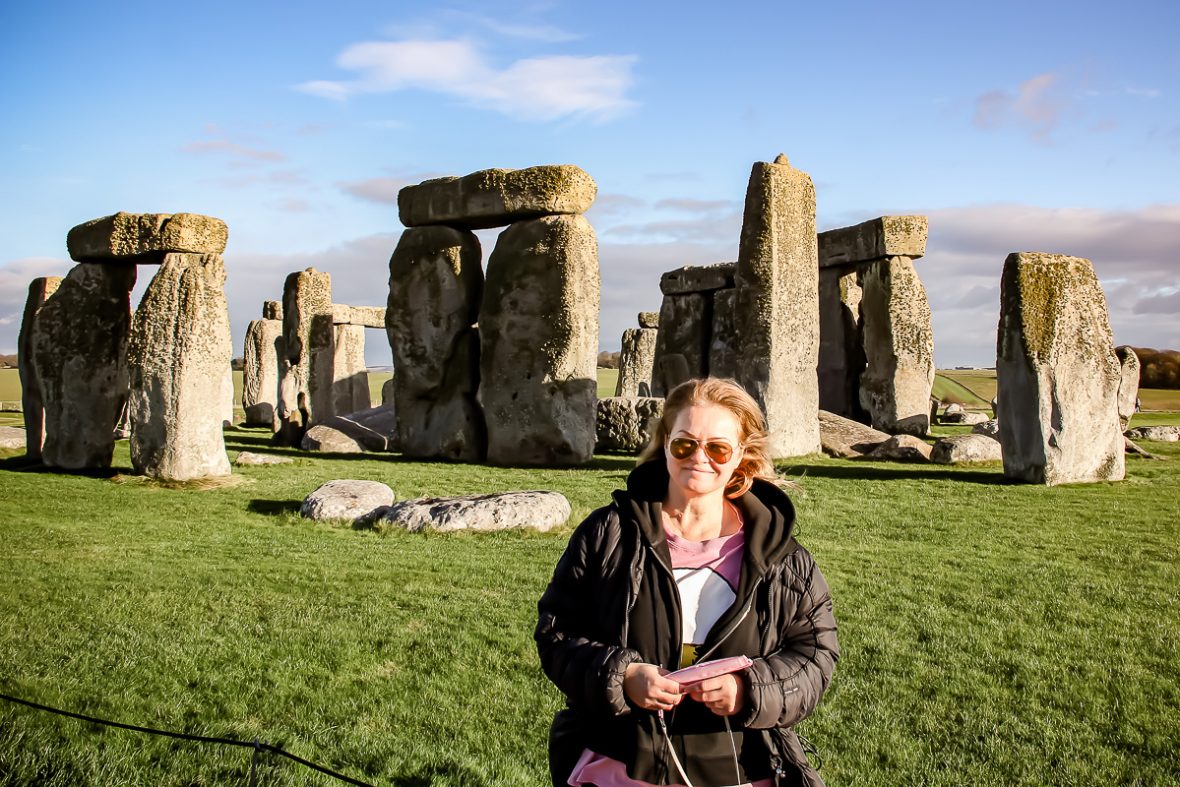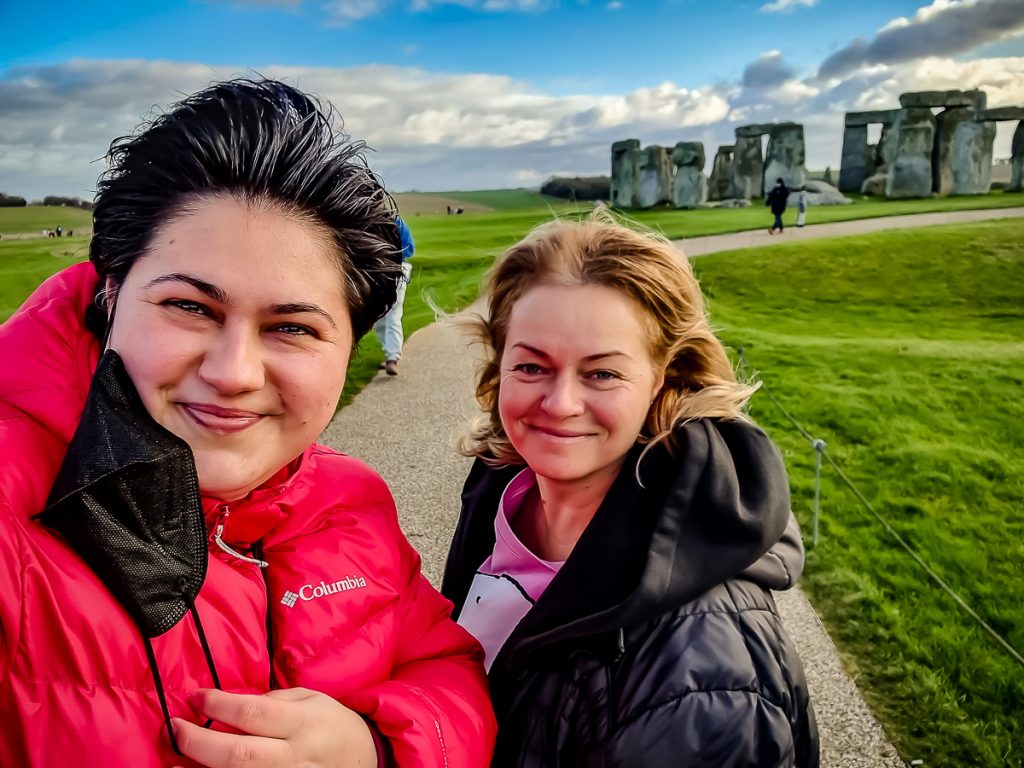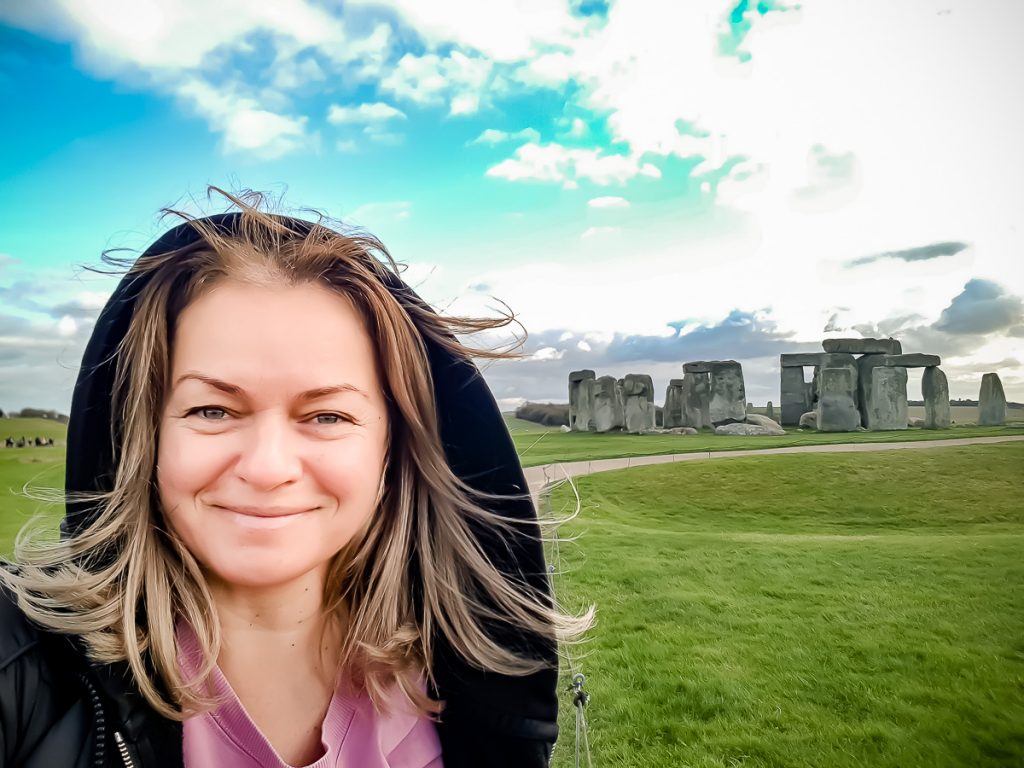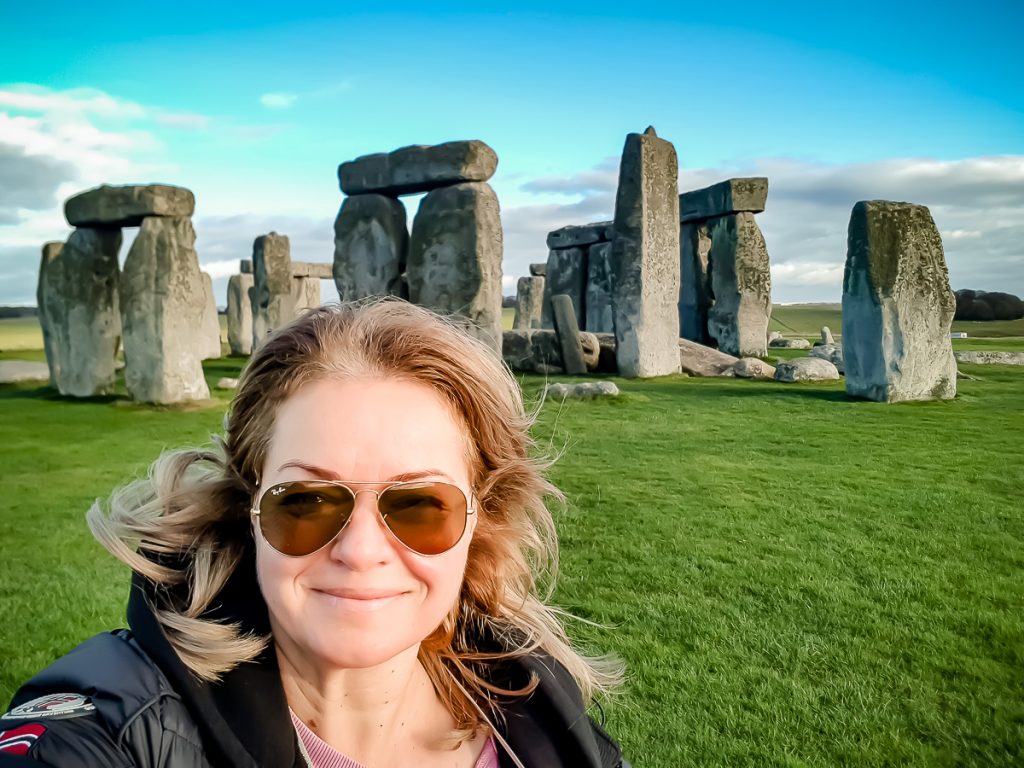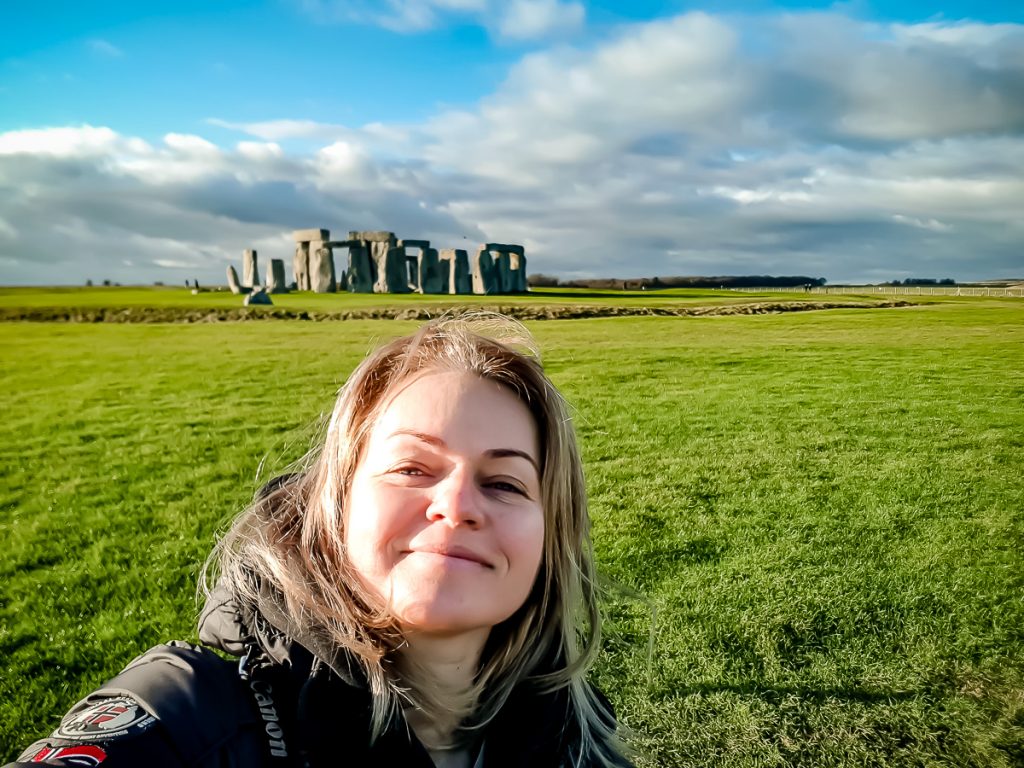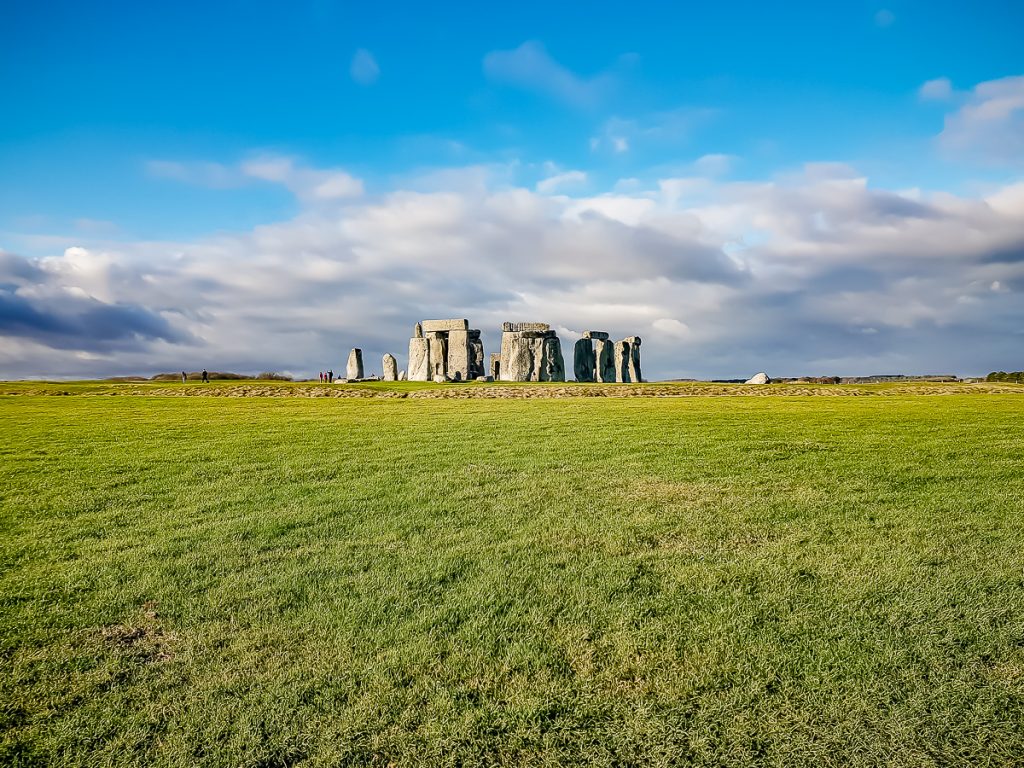What were people doing 5,000 years ago?… Well, because the internet and the smartphone hadn’t been invented yet, because they didn’t have any Minecraft or Netflix, they played with the gods as well as they could.
And, just to make our life difficult, they started to erect some boulders, they lined them up nicely, on spectacular surfaces very often, in an absolutely clear logic for them and with a well-defined purpose. Ok, ok, it was clear to them, but to us, after all this time, everything is still an enigma!
Isn’t it great? That no one has been able to discover until today, in the 3rd millennium, what the role of these “megaliths” is and, especially, how in God’s name, they were raised by the people of those times (we are talking about the Neolithic Age!).
For years I intended, on one of my visits to London, to escape to Stonehenge, which I had read and heard so much about, since I was a child.
CARNAC FRANCE
Many years ago I went on a camp in the west of France, in Brittany, and they took us all on a trip to “the most important prehistoric place in Europe”! A space full of mysterious lines of prehistoric stones that still haunt archaeologists. These are the ones I mentioned above.
I was impressed to find out that I was seeing the biggest ensemble of this kind in the world!!!
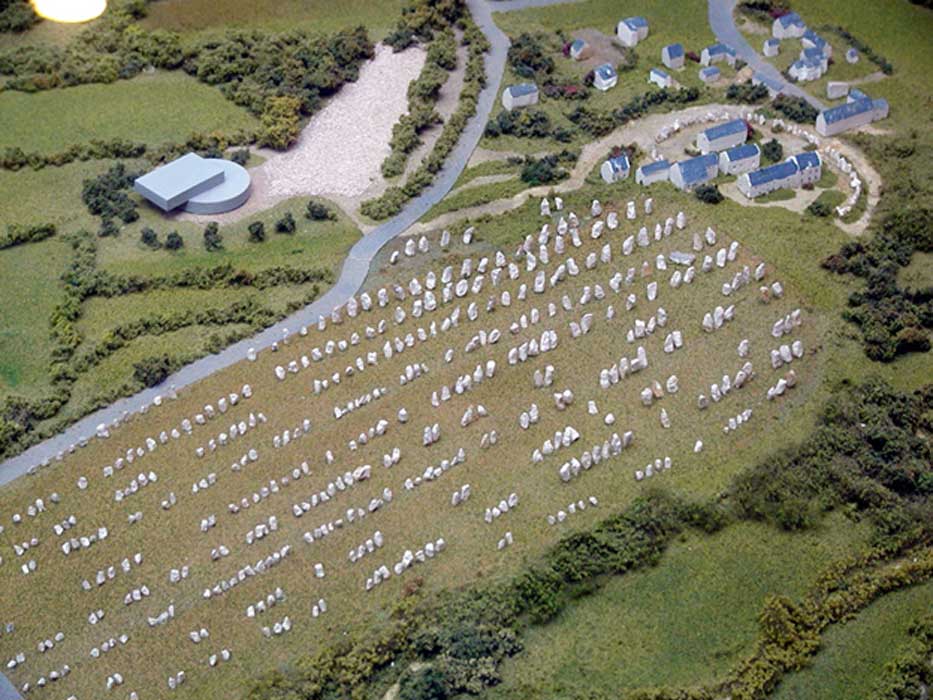
In the area there are over 4,000 blocks of rough or roughly carved stone, vertically arranged blocks (menhirs). And the largest alignment has 1,029 such pieces! Studies show that some of the rows may even have been 4 kilometers long, including thousands of megaliths!
Among the aligned stones of Carnac isa huge block of granite, called El Grah, which, although broken into 4 pieces after an earthquake, has some impressive data: over 20 meters high and weighing 330 tons!
The boulders here were raised by humans about… 7,000 years ago. I don’t even know how to go so far in time!
At the top of the theories about the purpose of this huge ensemble is the idea that it would have been a huge Astronomical Observatory.
According to the local belief, the stones were an aligned Roman legion, transformed into rocks by the wizard Merlin…
I don’t remember much about this trip, I didn’t know at the time what these stones were all about. But I clearly remember that on this trip I found out about a place in England called Stonehenge, about 2,000 years younger than this one, but which had boulders too and was just as mysterious.
AVEBURY ENGLAND
So… here I am in London, after I don’t know how many previous visits. Man, now I really must not miss the opportunity! I have to see the famous Stonehenge!!!
Said and done!
I’m going to Stonehenge with my friend Mira from England, by car. The road takes us through picturesque villages, with beautiful houses and many beautiful horses covered with colorful blankets that keep them warm. The truth is that a cold winter wind is blowing outside.
We are about 120 km from London.
Shortly before reaching our destination, we enter Avebury and find ourselves going through whole lines of vertical stones, stuck in the field next to the road. And we keep going in parallel with them, we keep going and they never end! Wow!!! I try to take pictures, to film, to see them with the naked eye.
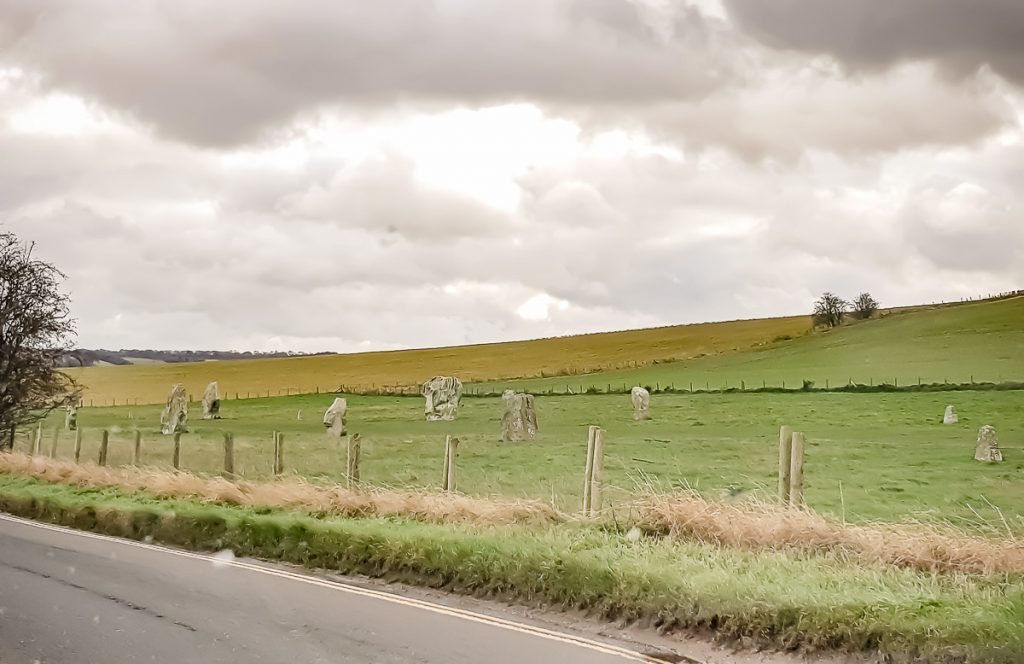
To my surprise, I find out that Avebury is proud of the largest megalithic circle in the world (330 meters in diameter)! Besides it, there are two smaller ones, 107 and 98 meters. Some boulders from here weigh 60 tons!
The place was almost certainly the main center of religious activity in the region.
What a pity that you are not allowed to use a drone in this area, as I would have liked to see the place from the top – everything covers about 4,000 square meters. From what pictures I saw on the internet, it looks spectacular! I am pleased to be able to see everything from the car, as much as I can…
One of the local researchers – a professional archaeologist – said in the 17th century that Avebury “compared to Stonehenge, is what in Paris is a cathedral compared to a church”. Really? I had no idea.
STONEHENGE
So we go to the “church”, if I am to accept the comparison of the architect, but my impatience is still great, considering that I have wanted to see this place for so many years. I can’t wait to get to one of the most famous prehistoric monuments in the world!
From the road, I suddenly see the whole thing. It is perfectly visible from the car, only we can’t stop on the road to look at it. So we go further, in the rhythm of the traffic, looking for the parking for curious, enthusiastic or intrigued tourists.
Very far from the megaliths we find the parking lot, we go to the counter and, before we pay the tickets, we go through all the information on the walls: from the end of May to the end of August the complex is open between 9.30-19.00, otherwise only until 17. The last entry is 2 hours before closing, so you have time to look as much as you want. And no, you’re not allowed with metal detectors, as who knows what you might be leaving here with and you’d be damaging Britain’s museum pieces heritage.
We pay the tickets (a lot, about 26 euros per person!) and we go to a bus that makes a continuous round trip, carrying tourists to the rocks and back.
You can also walk (about half an hour I estimate), but the weather now is not at all appropriate for such a thing…
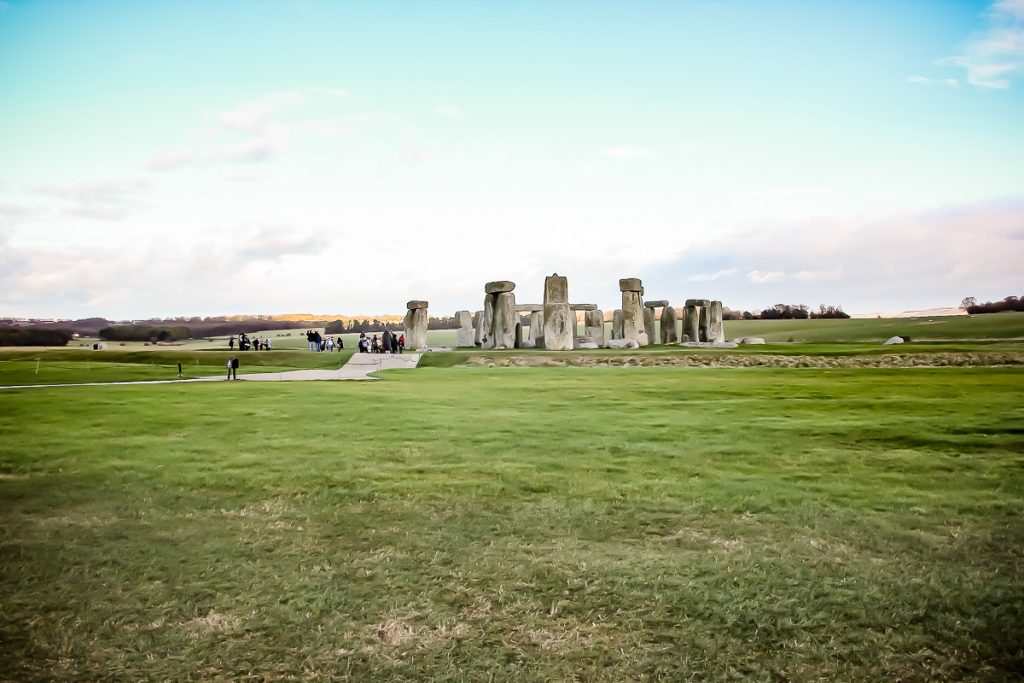
We get off after about 5-7 minutes and, in the distance, on an open embankment measuring almost 100 meters in diameter, I see the famous, well-known, much-desired to be seen by me prehistoric monument from Stonehenge.
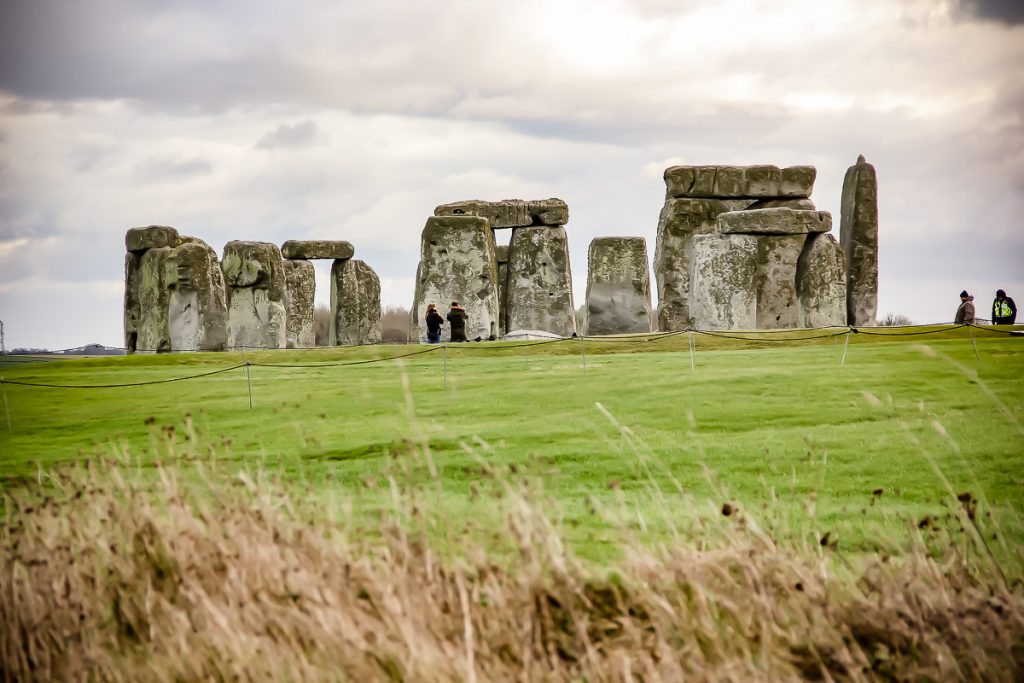
Shall I tell you the first thought that came to my mind?
“God, what good marketing can do!” J))
Don’t blame me, I swear this was my first impression: that marketing has made this place not just a tourist spot, but even a place to dream about visiting for years!
“Overrated” – I hear. There you go, I’m not the only one…
With the big promotion it has, you would think Stonehenge is unique, but, as I said above, it is not. Moreover, there are over 100 megalith circles in the UK and France. Stonehenge is, however, the best preserved.
However, you know, I’m glad I arrived here. Even if it’s so bloody cold that I don’t know what else to put on! I’m in the middle of the plain and whatever winds these people have here, they are all blowing…
For a few selfies, I made great sacrifices. One of them being not wearing anything to cover the head, believe me! After the selfie, I immediately put my cap on, over which I pulled the hood of the sweater, over which I pulled the jacket’s hood. And I was still cold…
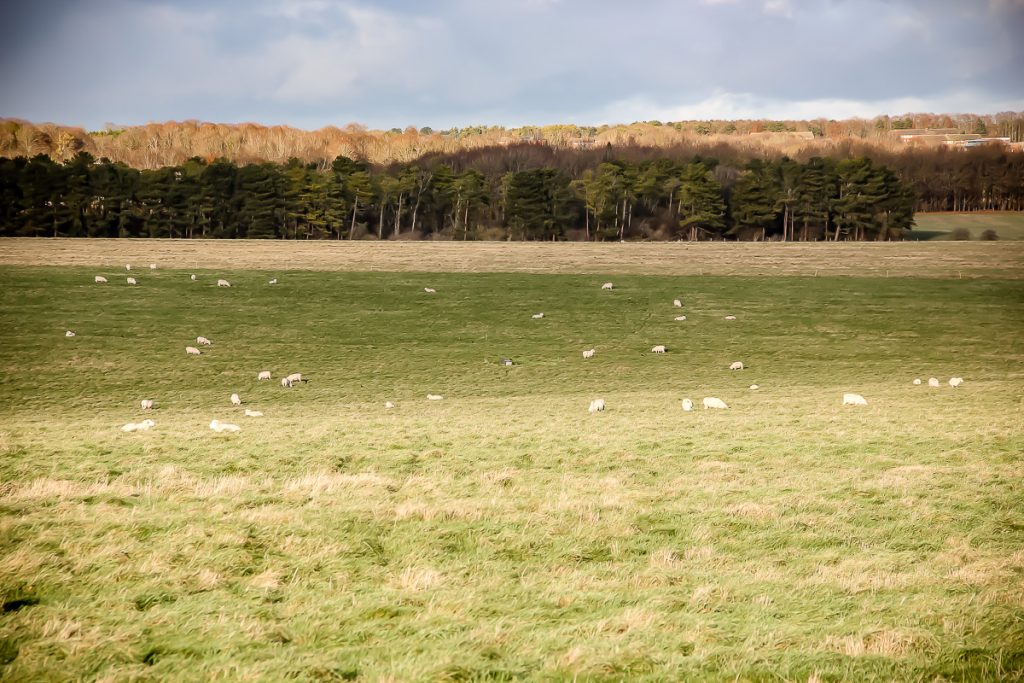
In the field next to the boulders, a few sheep are grazing quietly and… God, how I would like to skin one and wear its fur!
WHAT IS STONEHENGE?
The Saxons called this group of vertical stones “stonehenge”, meaning “raised stones”.
It’s a place that raises a lot of questions. If you think about 5,000 years ago, if you imagine yourself following in the footsteps of prehistoric people, your mind will work tricks on you and you will start to connect the things that make this place enigmatic and therefore fascinating.
You see the houses where they lived (reproductions, of course).
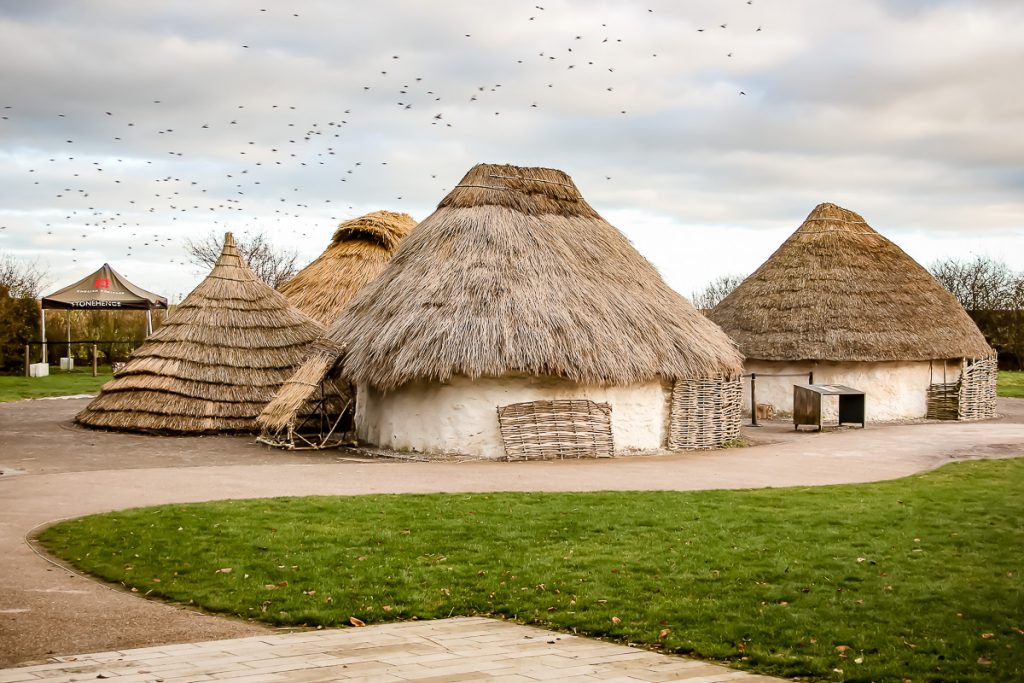
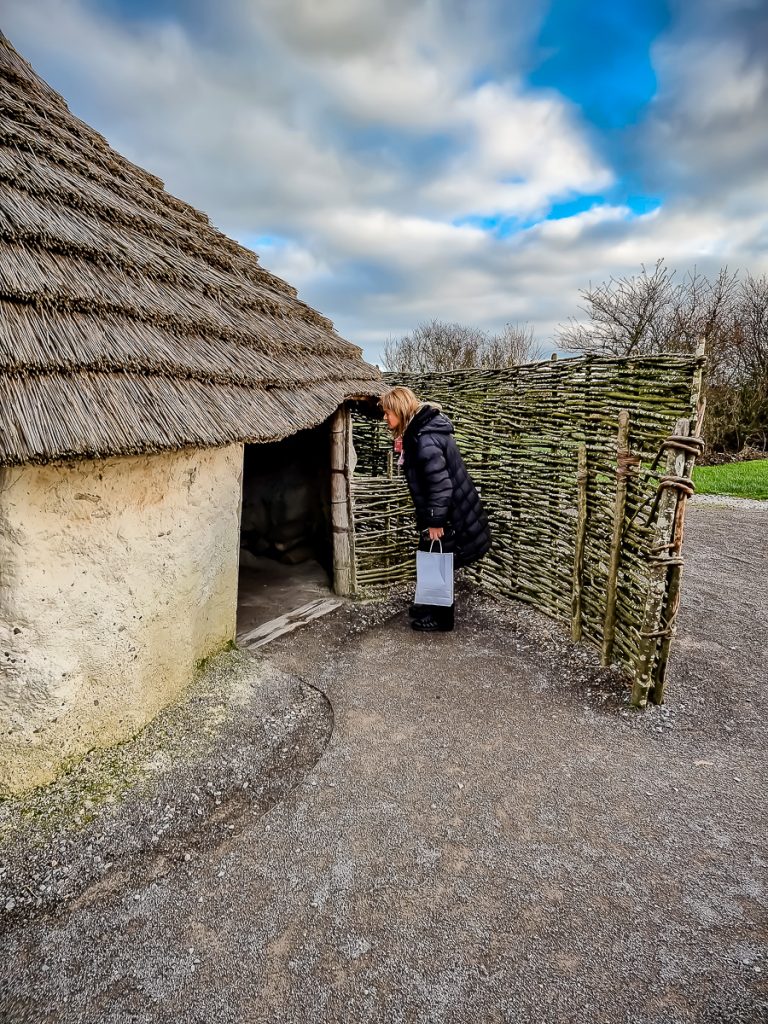
It is a shocking discrepancy between the poor houses with straw beds and, on the other hand, the engineering deeds of prehistoric people, facts that can be seen even with the eyes of a novice in megalithic construction!
First of all, you think that some people built this monument starting around 3,000 BC (some say 2950, recent studies say 2400-2200) and continued until around 1500 BC, when got the shape that stands out today.
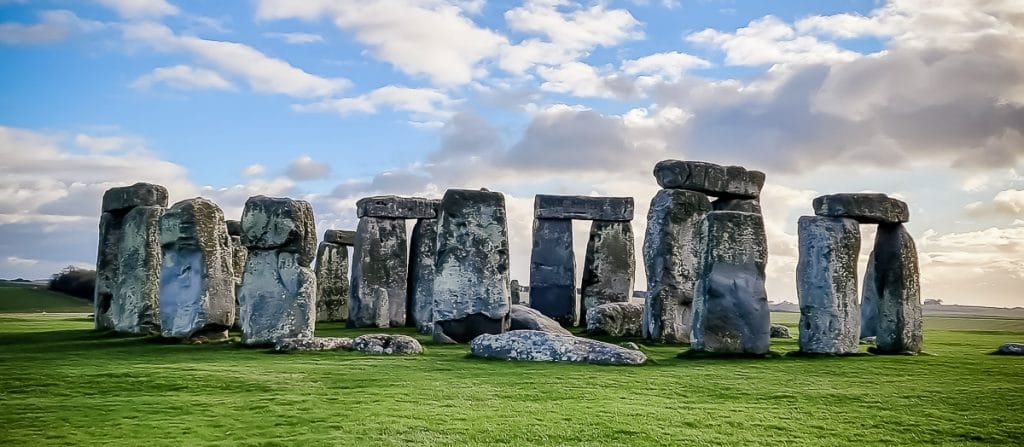
It is basically a circle of massive stones, placed vertically, with a mysterious symbolic meaning.
Who knows what it represented?
There is so much research, so much theory, so much assumption. Was it a religious place? A calendar? An ensemble used for funeral rituals, given the discovery of cremated bones? A place where peace offerings for deities were made? An observatory which predicted major astronomical events? A Roman temple? The space where the villagers gathered on the occasion of certain holidays? A spiritual place?
Many questions, many unknown things. No certainty.
Theories have appeared and disappeared for centuries, followers and opponents have expressed their point of view, and some have even come up with evidence to support their theory.
So, in the 17th century, the Roman Catholic and Anglican churches came and said that Stonehenge and other places like this one were haunted temples that would sustain the witchcraft and the work of the devil. That was all the farmers in the area needed: they came in a hurry, ma’ man, and, proud that they were contributing to the disintegration of a notorious construction, they began to take as much as they could from the stones, which they used as building materials in their homes. Cool or what?…
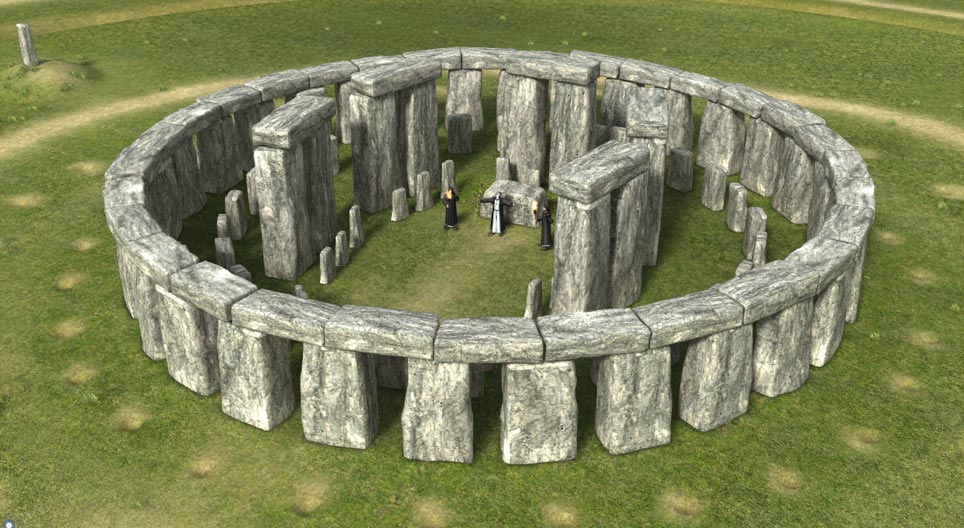
I found several photos on the internet that make you understand what this place looks like in all its glory.
At this moment, although more than half of the stones have collapsed, disappeared or are buried in the ground, you can get an idea of their original shape.
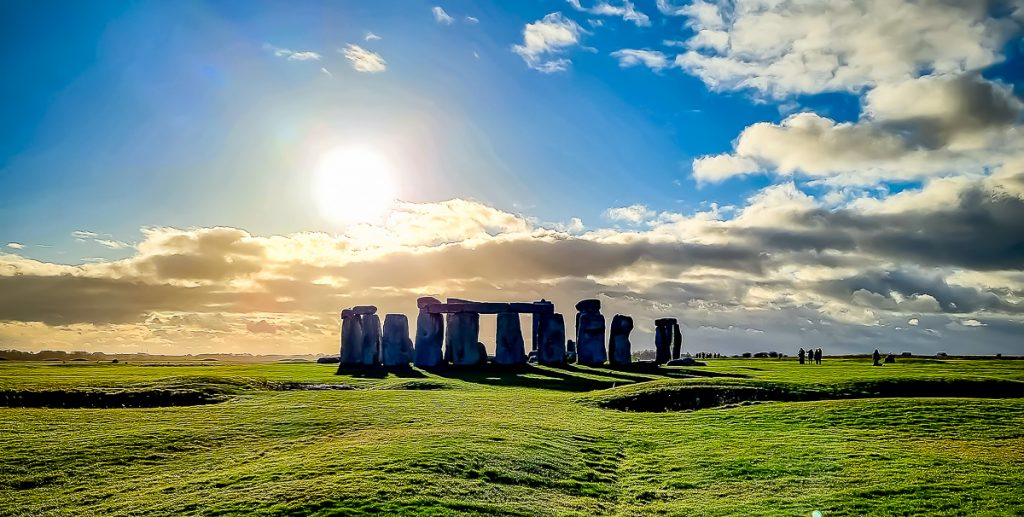
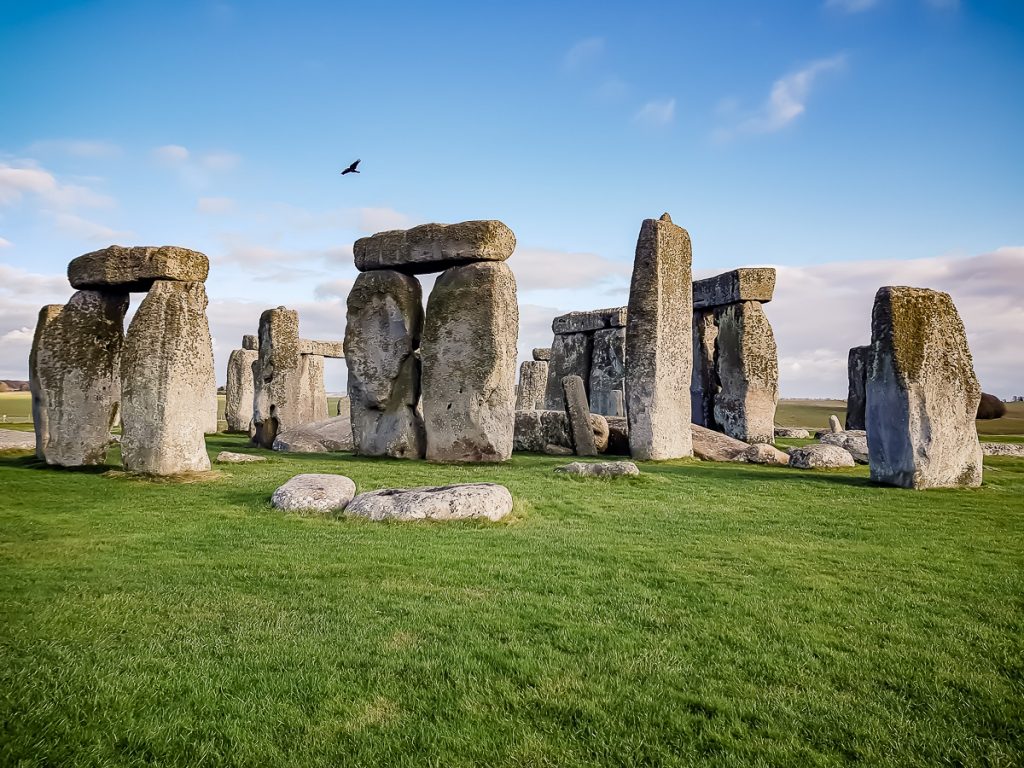
Earlier in the 20th century, Stonehenge began to be used by New Age and neo-pagan worshipers. People gathered here and performed various rituals. And they kept it that way for a long time, until 1985, when the British government had to protect the monuments by law, so bye-bye any ritual.
The truth is, despite what I’ve seen on the internet, you really can’t get close to the stones, you can’t walk among them, you can’t touch them, you can’t rest your bones on them, you can’t hide from the sun in their shade and no, you really can’t climb on them. Moreover, you are not allowed to destroy the land around them. The whole ensemble is surrounded by a kind of fence and the paths in the area are… only one, in fact. Well marked, so that you cannot say you didn’t see where to go.
ABOUT STONEHENGE
I gave myself a headache reading about these stones, how many kinds they are, where they came from, when they were stuck in the ground. I could write about 5 more pages…
The point is, those people about 5,000 years ago started with one circular ditch about 100 meters in diameter and a circular earth bank, after which they dug holes in the ground, made an alley (Avenue) to the river 3 km away, an entrance, then began to carry various boulders.
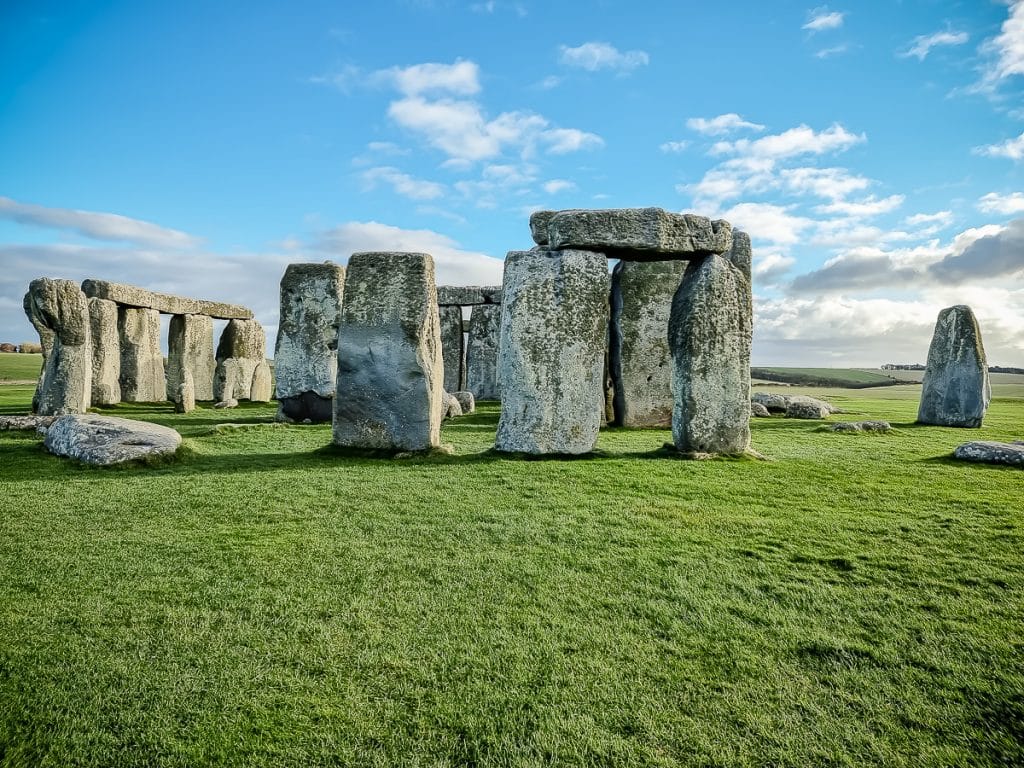
The 4 main components of the complex are, from the outside to the center: a ring of vertical standing stones exceeding 5 meters in height, joined by horizontal stones; a circle of smaller bluestones; a horseshoe-shaped arrangement, also made of granite stones (bluestones), and in the center a sandstone called the Altar Stone.
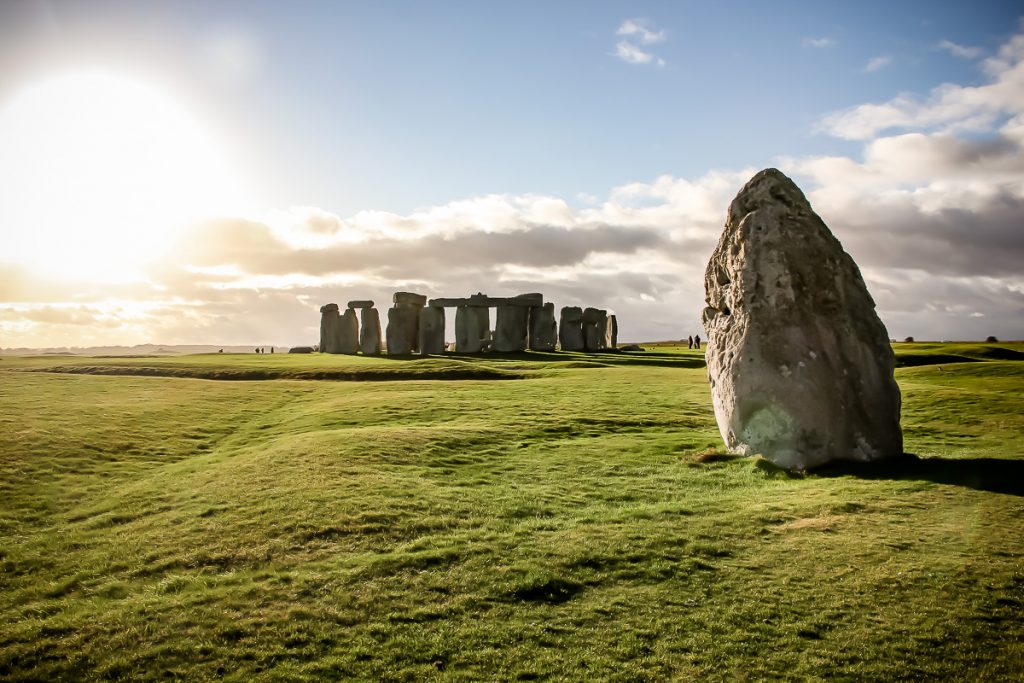
A little further from this compact monument, but in the immediate vicinity of the tourist path, you come across a sloping boulder. It’s called the Heel Stone, it weighs about 30 tons and apparently it had an identical pair. The two formed a kind of gate at the main entrance, through which the processions passed. Heel Stone is the oldest stone here!
Regardless of the theories about this place, one thing is certain: during the summer solstice – June 21 – the sun passes right through the axis of construction!

Therefore, it is assumed that the people who built Stonehenge had knowledge of astronomy and that June 21 had a special significance, probably a religious one.
“Did you feel any energy there?”, a friend asked me when I told him I was at Stonehenge.
I didn’t feel anything, to be honest hihi. But I also attribute it to the fact that I was neither during the solstice, nor did I have access in the middle of the ensemble, among the stones. Beyond the fence, shivering from the cold, I just felt everything was freezing…

Even the crows seemed petrified by the cold here J.
I took advantage of the sun coming out of the clouds, which instantly gave another light to the megaliths, and I took more pictures.
THE STONEHENGE MYSTERY
How, in God’s name, did the people of the Bronze Age bring these big and heavy boulders and how did they manage to lift them, to align them and even more, to put other stones on them, like beams?! Remember, we are talking about the year 2500 BC!
Great craftsmen, everyone says.
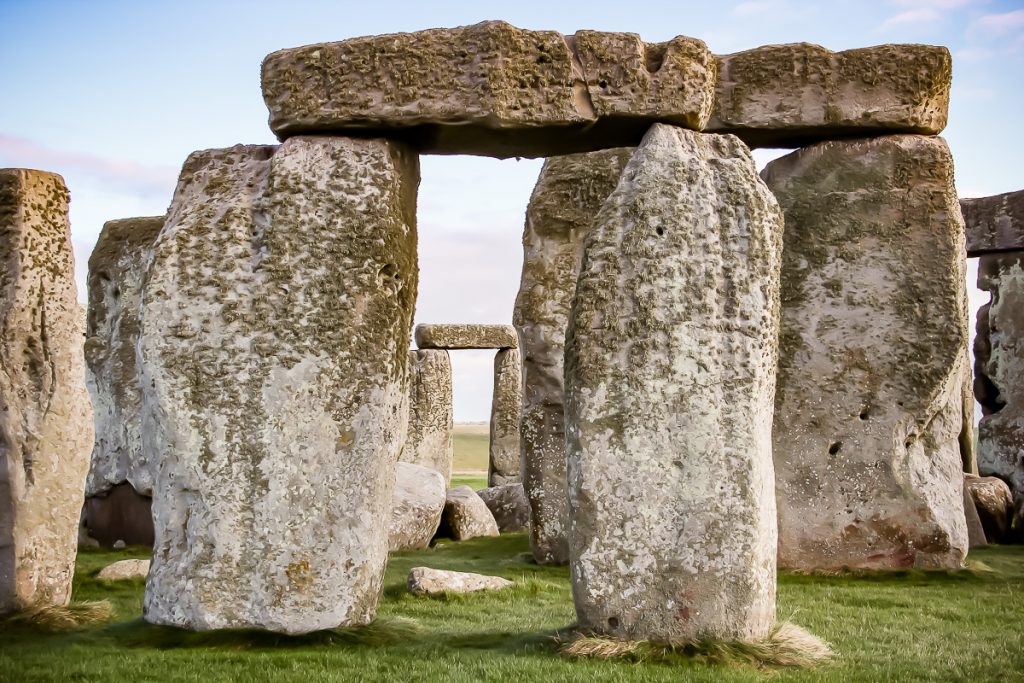
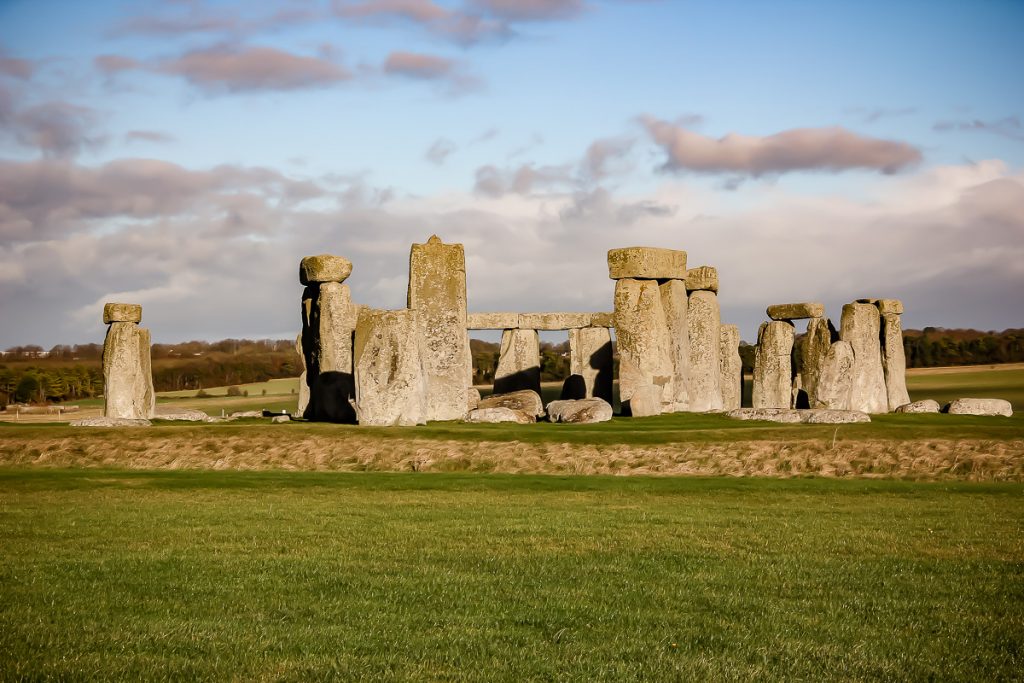
The Sarsen stones, which make up the outer circle (sarsen is a kind of sandstone), are up to 9 meters high and weigh about 25 tons each. They were brought here from a distance of about 32 kilometers. Okay, you’ll consider this a breeze when you know that some megaliths (the bluestones) weighing 2 to 5 tons have been brought in from… believe it… over 200 kilometers, from Wales!!! Shocking or what?
Super organized, definitely having great transportation procedures! (And I’m complaining when I carry water bottles from the supermarket…)
From what I read, it is not known exactly the route on which the boulders were brought, but, according to the studies, it is clear what the starting point was – Craig-y-Rhos Felin, Wales. Specialists say that they were either dragged or pushed on logs and, in the water area, transported on rafts.
Why so much effort?? The supposed reason is that people believed that those stones had healing powers. And, as the access to the mountains, to the bluestone quarry, was not within everyone’s reach, they would have probably decided to follow the principle “the mountain comes to Muhammad”…
THINGS TO DO IN STONEHENGE
About the Neolithic houses reproduced I wrote above. They make up a kind of a village, with the role of shocking you when you see how the people who lived in those primitive conditions, who used primitive tools, were able to make such complicated, spectacular and very precise constructions!
There is also a museum, an exhibition more precisely, where you can sit and listen about over 250 archeological objects and you can analyze many pictures of people between megaliths, taken in different periods. Many from the times when you could walk among the stones, climb on them. Too bad Instagram wasn’t invented at the time J.
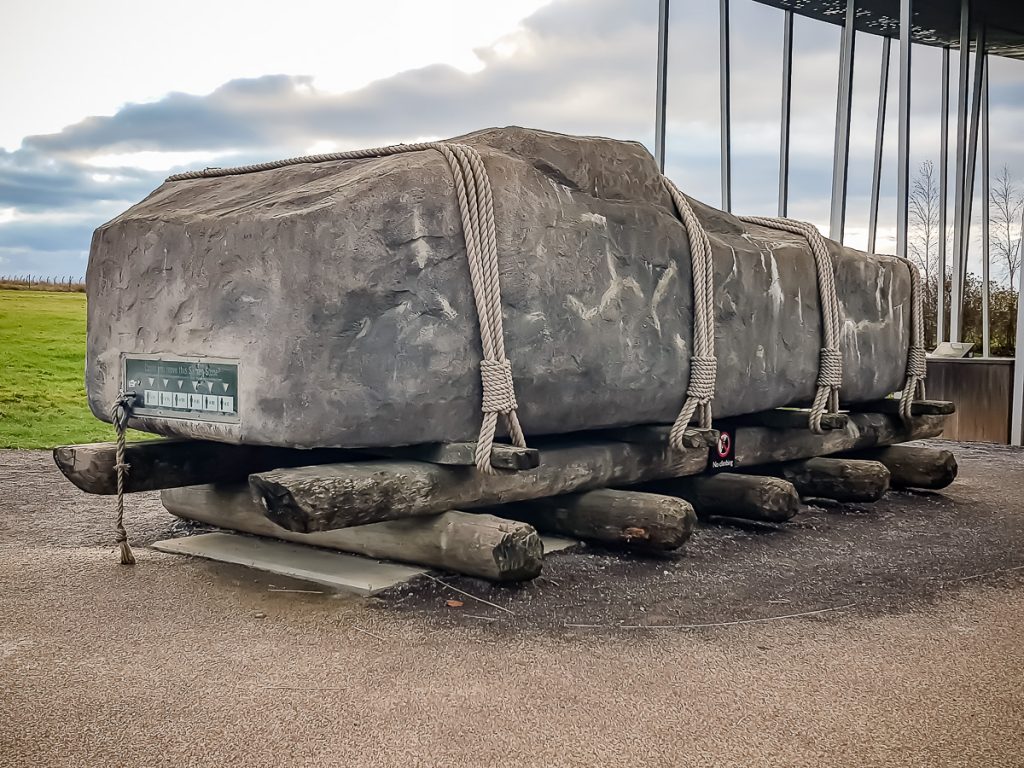
A funny experience – for me, at least – is testing my own strength. There is a boulder here similar to the ones in the monument, mounted on some wooden rails, well tied with strings. And you pull them like an ox, to see how far your muscles hold J.
“Can you move this Sarsen stone?” – is written in bid letters. Depending on the power you have when pulling the string, it illuminates the number of people you still need to move the huge boulder. From 99 people, 95, 90, 85, 80 and … 0, in case you are a Hercules.
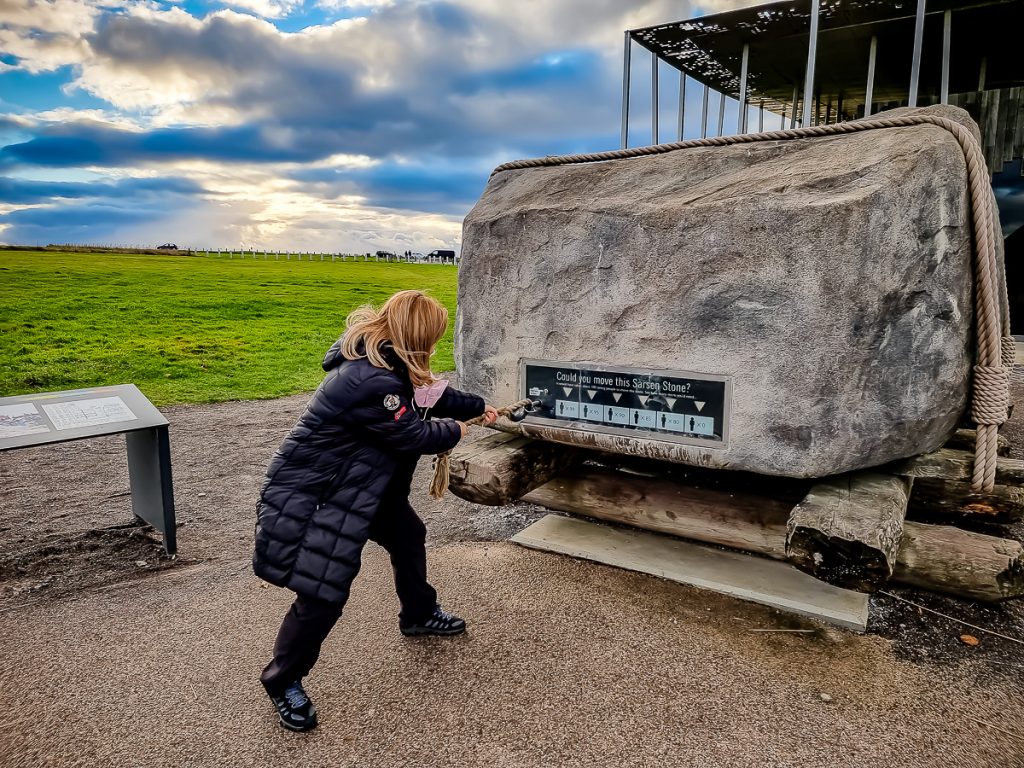
I pulled so hard that it showed me that I still needed the maximum number of people, that is 99 hihihi.
I pass the cafeteria at the exit and go into the souvenir shop. My God, it’s expensive! You can find anything you want and, because it has “Stonehenge” on it, you pay more than you normally would. They even have COVID masks with a stone on them. Drawn, not real…
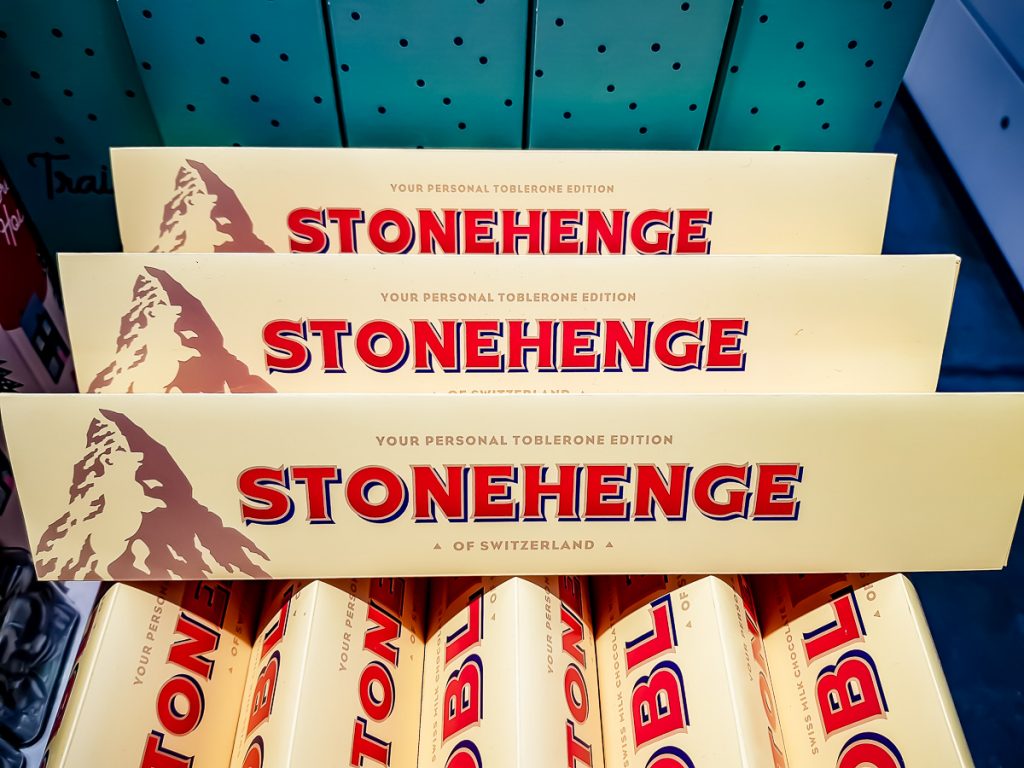
Well, you’ll be surprised, but I resisted the temptation to buy a Toblerone with Stonehenge. The truth is there is nothing stronger than The Toblerone with Mladin on it hihi.
Instead, I took many postcards, a few small souvenirs and… I stopped. I said to leave some for “the others” too.
DISCOVERY!
I don’t know if they had more time during the pandemic to listen to Mother Earth, but it is certain that archaeologists have recently discovered something very interesting! „Amazing!” – as they characterized themselves.
Only 3 kilometers from Stonehenge they came across a large circle, 2 kilometers in diameter, made up of pillars buried deep, a circle that surrounds an ancient settlement near Stonehenge (Durrington Walls).
The pillars date from the same period as the Stonehenge boulders, about 4,500 years ago! It would be 10 meters in diameter and 5 meters deep! Maybe the Neolithic people laid the foundations of a skyscraper-type residential complex…
The question they all had was: what effort did the people of that time have to make to dig with stone, wood and bone tools to be able to bury all these pillars?!?
And everyone was amazed to know that, just a stone’s throw away from Stonehenge, another treasure has been hidden for such a long time. How the hell didn’t they find it??
What is paradoxical is that almost half of this fabulous circle cannot be studied today, due to the modern development. I imagine the authorities knocking on the door of the local families: “Ma’am, sir, pack everything up and go away, because we have some digging to do and your house is kind of in our way”…
CONCLUSION
OK, I can admit the “overrated” categorization. But reading about the boulders, after looking at them like a calf looking at the new gate, I realize that the mystery about those people, those stones, their transport and construction, but especially their purpose, is fascinating!


